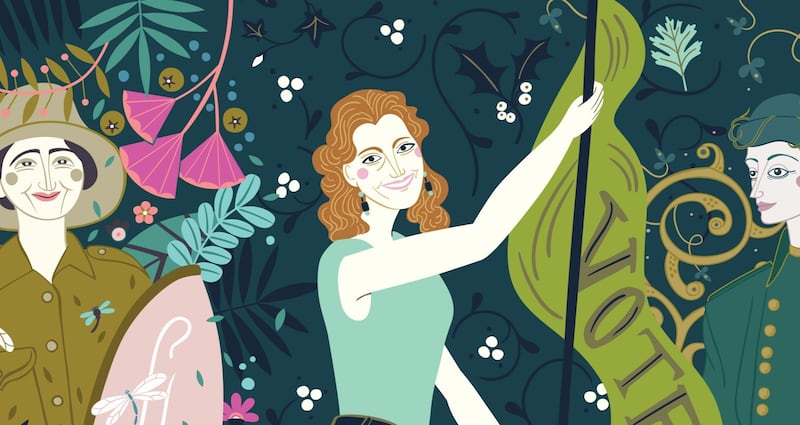Helen Sophia Chenevix (1886-1963), trade unionist, suffragist and social campaigner, was born on November 13th, 1886, at Ivy Bank in Blackrock, Co Dublin. Educated at Alexandra College, in Milltown, she went on to Trinity College Dublin, where in 1909 she graduated BA.
Early on she became involved in labour and social issues, although it was as a suffragist that she first came to prominence. In 1911 she founded, with Louie Bennett, the Irishwomen’s Suffrage Federation. A politically independent, nonmilitant organisation, it linked a variety of suffrage societies throughout the country, and was subsequently instrumental in the formation of Dublin’s Irish Women’s Reform League and Belfast’s Women’s Suffrage Society.
During the passage of the home-rule Bill, in 1912, she campaigned for the inclusion of women’s suffrage as part of the proposed legislation. Then, following the implementation in England of the Prisoners (Temporary Discharge for Ill Health) Act 1913 – aka the cat-and-mouse Act, which allowed suffragists weakened by hunger strikes to be released, but then authorised their immediate reimprisonment for any wrongdoing – she was among the Irish delegates invited by the National Union of Women’s Suffrage Societies to take part in a conference at Caxton Hall, a political meeting house in London. She later lobbied the lord lieutenant on the treatment of Belfast suffragists who had suffered under the enforcement of the Act in Ireland.

Chenevix worked for State-sponsored school meals, more inner-city playgrounds, a reduction in retail prices and improved housing
Chenevix's interest in the conditions of working women stemmed in part from her attendance, as a young girl, at a lecture by Dr RM Gwynn entitled Women and Children in Industry. According to her own account this had a profound impact on her work, as did her Christianity; she later said that, "no matter how secular my work might be, I always worked under a sense of guidance".
In 1916 she assisted Bennett in the reorganisation of the Irish Women Workers’ Union. Until Chenevix retired, in 1957, her work as an executive member of the union occupied the greater part of her public life, although she received only a nominal payment. She often travelled the country, meeting trade councils and workers, and when Bennett was absent she took full responsibility for negotiations with employers.
She regarded the union as an organisation that should look beyond its members’ immediate working conditions and tackle wider social issues. Her influence in the Irish Women Workers’ Union is reflected in the establishment, in 1941, of the Torch and Distaff Guild to provide assistance for unemployed members.
During the 1920s Chenevix campaigned vigorously for the school-leaving age to be raised to 16, and argued that poorer families should be financially compensated by the government for the consequent loss of earnings. She also worked for State-sponsored school meals, better provision for playgrounds in the inner city, a reduction in retail prices and (as a member of Dublin corporation) improved housing.
Having served as vice-president of the Irish Trades Union Congress in 1949, she was appointed president in 1951. In May 1954 the Irish Women Workers’ Union urged Chenevix to allow her name to go forward for a Seanad nomination, but she refused.
After Bennett’s retirement in 1955, Chenevix succeeded her as general secretary of the Irish Women Workers’ Union. Her leadership, which stressed the importance of a collective contribution from members, differed in many ways from Bennett’s. She served for many years on the national executive of the Irish Trades Union Congress; her membership of its education committee led her to support the People’s College adult-education association.
A member of the Bray and district trades council, she was also a councillor on Dublin Corporation, and served on several committees, among them the child-welfare committee and the committee for the National Maternity Hospital; in 1947-9 she was vice-chairman of the scholarships committee. She was also associated with the Fellowship of Reconciliation, the Women's International League for Peace & Freedom, and the Irish Pacifist Movement, of which she was vice-president.
After Chenevix retired she concentrated on working for peace and nuclear disarmament. She died on March 4th, 1963, in Dublin, and was buried in Deansgrange Cemetery.
From the Royal Irish Academy Dictionary of Irish Biography, published by Cambridge University Press










